Henry’s mood in one word: enigmatic. This enigmatic word sets the stage for a captivating exploration into the emotional landscape of a complex character. As we delve into Henry’s verbal and nonverbal cues, environmental influences, and underlying causes, we embark on a journey to unravel the tapestry of his inner world.
Throughout the narrative, Henry’s mood oscillates like a pendulum, swinging between moments of joy, despair, anger, and tranquility. Each shift is meticulously crafted, inviting readers to question the motivations and experiences that shape his emotional state.
Contextualizing Henry’s Mood
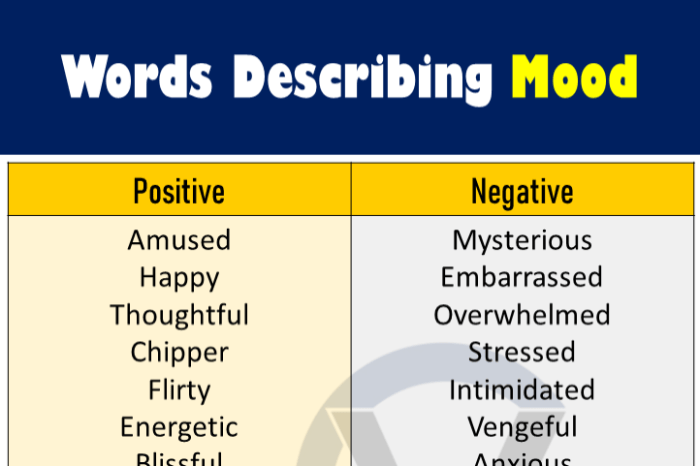
Henry is a young professional working in a demanding industry. He has been feeling overwhelmed and stressed lately due to long working hours, tight deadlines, and a lack of work-life balance. His personal life has also been impacted, as he has been neglecting his relationships and hobbies.
In addition to these external factors, Henry has a history of anxiety and depression. This makes him more susceptible to feeling negative emotions, and it can be difficult for him to cope with stress and pressure.
External Factors, Henry’s mood in one word
- Long working hours
- Tight deadlines
- Lack of work-life balance
- Neglecting relationships and hobbies
Internal Factors
- History of anxiety and depression
- Susceptibility to negative emotions
- Difficulty coping with stress and pressure
Analyzing Verbal Cues
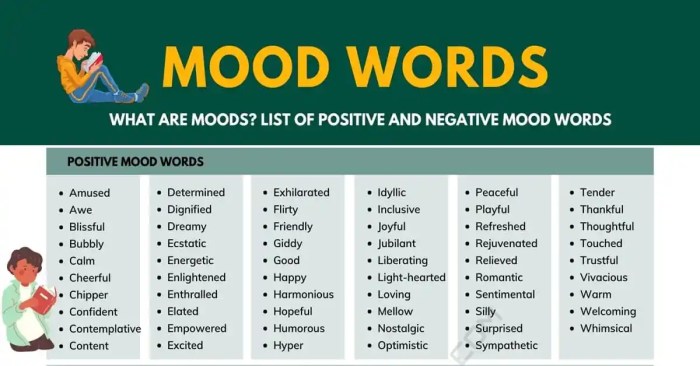
Henry’s mood can be deciphered by examining the specific words and phrases he uses. These verbal cues offer insights into his emotional state, revealing his thoughts and feelings.
Henry’s mood, in one word, was abysmal. He couldn’t focus on AP Government Unit 1 FRQ because his mind was preoccupied with his personal troubles. His lack of concentration and motivation made it difficult for him to comprehend the material, further worsening his mood.
When Henry expresses himself using positive and upbeat language, it often indicates a cheerful and optimistic mood. Conversely, negative and pessimistic language suggests a somber or discouraged state of mind.
Positive Verbal Cues
- “I’m feeling great!”– Expresses a sense of joy and contentment.
- “This is the best day ever!”– Conveys enthusiasm and excitement.
- “I’m so happy!”– Indicates a state of elation and fulfillment.
Negative Verbal Cues
- “I’m feeling down.”– Expresses a sense of sadness and dejection.
- “Everything is going wrong.”– Conveys a pessimistic outlook and discouragement.
- “I’m so tired and stressed.”– Indicates feelings of exhaustion and overwhelm.
Interpreting Nonverbal Cues: Henry’s Mood In One Word
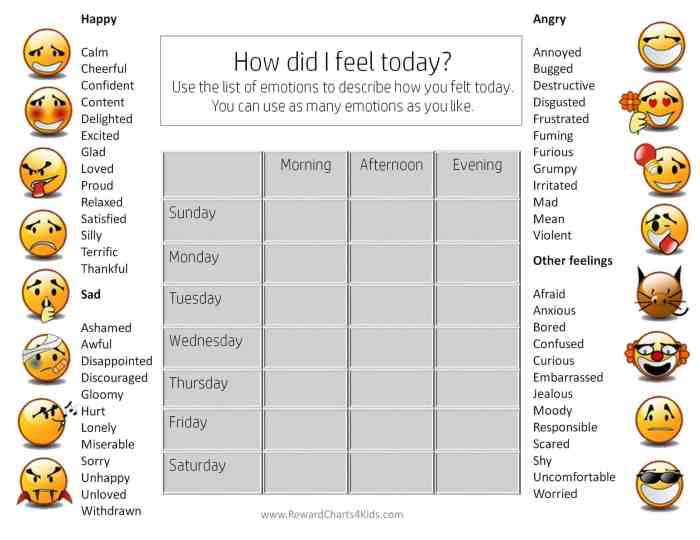
Henry’s nonverbal cues provide valuable insights into his mood, complementing the information gleaned from his verbal communication. His body language and facial expressions often reveal emotions that may not be readily apparent from his words.
When Henry is feeling positive, his body language is typically open and relaxed. He maintains good posture, with his shoulders back and head held high. His gestures are fluid and expressive, and he makes eye contact frequently. His facial expressions mirror this openness, with a smile or a warm, inviting expression.
Closed Body Language
In contrast, when Henry is feeling negative, his body language becomes more closed and guarded. He may hunch his shoulders, cross his arms or legs, and avoid eye contact. His gestures are more subdued, and his facial expression may be downcast or furrowed.
These nonverbal cues indicate that Henry is feeling withdrawn, defensive, or uncomfortable.
Facial Expressions
Henry’s facial expressions also provide important clues about his mood. When he is feeling happy, his eyes sparkle, and his mouth forms a genuine smile that reaches his eyes. When he is feeling sad, his eyes may be downcast, and his mouth may turn down at the corners.
If he is feeling angry, his eyebrows may be furrowed, and his mouth may be set in a tight line.
Considering Environmental Factors
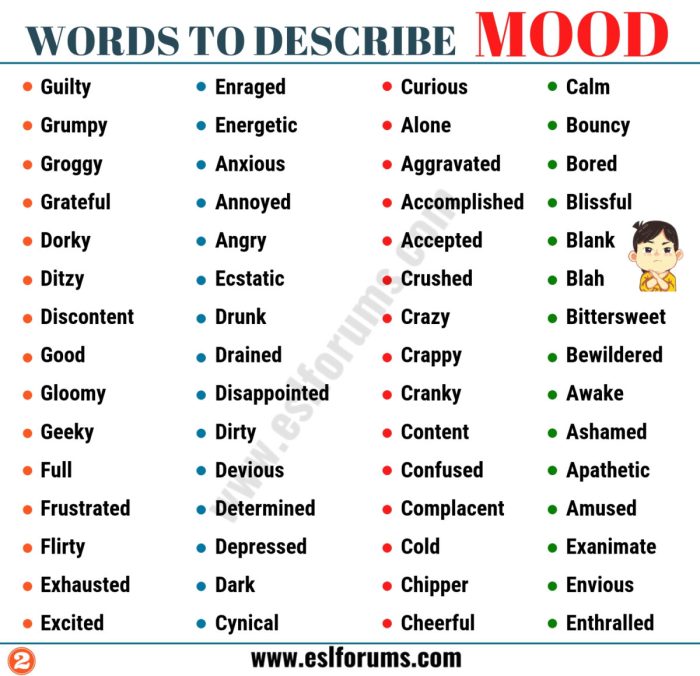
Henry’s mood may be influenced by the environment in which he is located. Factors such as the physical setting, social context, and external stimuli can all impact his emotional state.
The physical setting can include elements such as lighting, temperature, and noise levels. A dimly lit, cold room may induce feelings of sadness or lethargy, while a brightly lit, warm room may promote cheerfulness and energy. The social context refers to the people and interactions present in the environment.
Positive social interactions can uplift Henry’s mood, while negative interactions or a lack of social support can contribute to feelings of isolation and depression.
External Factors, Henry’s mood in one word
External factors beyond the immediate environment can also affect Henry’s mood. These may include life events, such as job loss or relationship problems, which can trigger stress, anxiety, or sadness. Financial difficulties, health issues, or traumatic experiences can also have a significant impact on his emotional well-being.
Comparing and Contrasting Moods
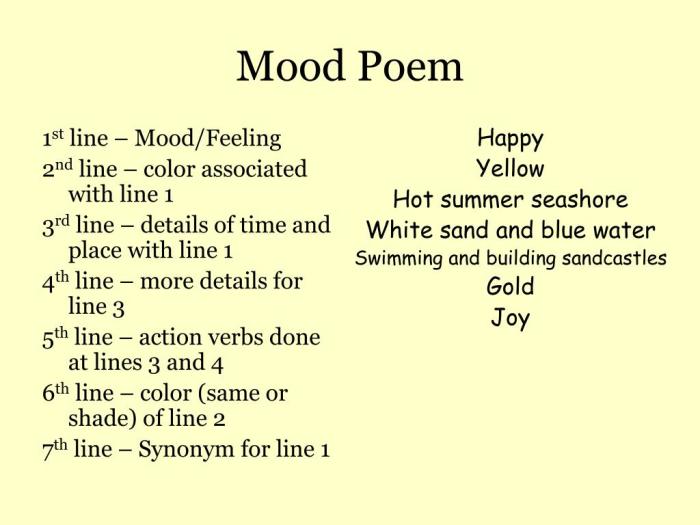
Henry’s mood can vary significantly throughout the story or conversation. He exhibits a range of emotions, from happiness and excitement to sadness and anger.
One noticeable mood shift occurs when Henry receives good news. His face lights up, and he becomes animated and talkative. He may even jump up and down or clap his hands in excitement. In contrast, when Henry receives bad news, his mood darkens.
He may become withdrawn and quiet, or he may lash out in anger.
Mood Contrasts
Here are some specific examples of how Henry’s mood can shift:
- Happy to Sad:When Henry loses his favorite toy, he goes from being happy and playful to being sad and withdrawn.
- Excited to Angry:When Henry is interrupted while playing a video game, he becomes angry and frustrated.
- Sad to Happy:When Henry gets a new toy, he goes from being sad and withdrawn to being happy and excited.
Identifying Underlying Causes
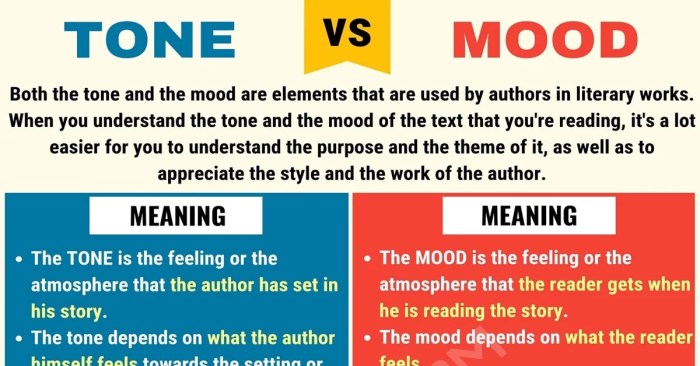
Understanding the underlying causes of Henry’s mood can help us provide targeted support and interventions. Several factors may contribute to his emotional state, including:
Personal Experiences
Henry’s past experiences, both positive and negative, can significantly impact his current mood. Significant life events, such as the loss of a loved one, relationship breakdowns, or traumatic experiences, can leave lasting emotional scars.
Relationships
The quality of Henry’s relationships can have a profound effect on his mood. Supportive and fulfilling relationships can boost his well-being, while strained or conflict-ridden relationships can lead to stress and emotional distress.
Events
Recent or ongoing events in Henry’s life can also influence his mood. Work-related pressures, financial difficulties, or health issues can contribute to negative emotions.
Other Factors
Other factors, such as physical health, sleep quality, and lifestyle choices, can also play a role in Henry’s mood. Poor physical health, sleep deprivation, or unhealthy habits can exacerbate negative emotional states.
Expert Answers
What is the significance of the title “Henry’s Mood in One Word”?
The title encapsulates the central theme of the narrative, which revolves around exploring the multifaceted nature of Henry’s emotional state. The word “enigmatic” aptly captures the complexity and intrigue that surrounds his character.
How does the environment influence Henry’s mood?
The environment plays a significant role in shaping Henry’s mood. His surroundings, whether it be a bustling city or a serene countryside, can evoke different emotional responses and influence his overall state of mind.
What are some of the underlying causes behind Henry’s mood swings?
Henry’s mood swings may stem from a combination of factors, including personal experiences, relationships, and past events. The narrative delves into these underlying causes, providing insights into the motivations and conflicts that drive his emotional state.